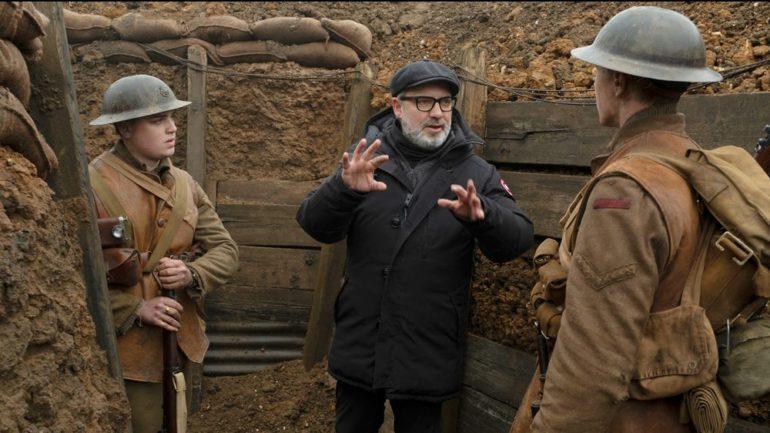How Sam Mendes and Roger Deakins Pulled Off the One-Shot War Epic ‘1917’
By Brent Lang
LOS ANGELES (Variety.com) – When cinematographer Roger Deakins opened the script for “1917,” he was greeted with the news that the entire, two-hour World War I epic would unfold as one continuous shot.
“I thought, ‘Oh my God,’” Deakins remembers. “This is a gimmick.”
Gimmick or not, it’s certainly the aspect of “” that’s generated the lion’s share of its publicity and inspired rhapsodic responses following a smattering of screenings for journalists and awards voters in November. The story of two British soldiers, Schofield and Blake, who are sent on a suicide mission across no man’s land has been hailed as the greatest war movie since “Saving Private Ryan” in no small part thanks to Deakins’ immersive, unrelenting and deeply absorbing camera work.
“[One-shot] is not right for every story,” says Deakins. “But it’s a great way to tell this particular story.”
Director Sam Mendes, who, like Deakins has found himself in the thick of the Oscars conversation for “1917,” says he needed to follow the main characters in one, largely unbroken shot as a way of ratcheting up the tension. During the course of a day, they walk through booby-trapped tunnels, bombed-out cities, and abandoned farms while dodging sniper fire, witnessing aerial battles and sneaking across enemy lines.
“It felt like the best way to give you a sense of all this happening in real time,” says Mendes of the singular perspective. “I wanted you to feel like you were there with the characters, breathing their every breath, walking in their footsteps. The best way to do that is not to cut away and give the audience a way out, as it were.”
He was partly inspired to try the approach after watching his children play first-person-shooter games such as “Red Dead Redemption,” which are told from the point-of-view of the protagonist. “I watch them with those games and I find them remarkably mesmerizing, almost hypnotic,” Mendes says. “I just wanted to do something like that but with real emotional stakes.”
Achieving that kind of on-screen intensity was no easy feat. Both Mendes and Deakins say that “1917” was one of the most technically challenging productions in their long collaboration — the pair previously worked together on “Skyfall,” “Revolutionary Road” and “Jarhead.” That was partly because without the freedom of cutting to other shots in the editing room, every piece of action choreography, each beat of dialogue and even the slightest camera movement had to go off without a hitch. Many of the scenes were captured in seven- or eight-minute takes and then spliced together to look as though they unfold in one shot.
“The pressure was immense,” Mendes says. “There’d be times where you’d get seven minutes into the take and someone would trip or a bit of mud would get on the lens or an explosive device would be off and you can’t use it. The acting could be wonderful and everything else could be right and you’d have to start again.”
“1917” has a personal resonance for Mendes. The germ of the idea came from stories that his grandfather, Alfred H. Mendes, told him about his experiences carrying messages around the front lines of the Great War. The tales helped him feel connected to a conflict that unfolded more than a century ago.
“He was very theatrical, very loquacious, extremely charismatic and a good storyteller with a big booming voice who was given to an Edwardian turn of phrase, and he held us completely spellbound,” says Mendes. “My heart opened when I heard those stories as a very young man, and they stayed with me.”
In the case of “1917,” that meant doing something novel for Mendes — collaborating on a screenplay, with Krysty Wilson-Cairns — marking his first stint as screenwriter. The film may have catapulted itself into the awards hunt, with some even predicting it’s an Oscar front-runner, but on paper “1917” was something of a risky proposition. It’s set during an unfamiliar war, it documents carnage on a mass scale and unspools in a world without a clear moral compass. It’s not the kind of movie studios, which prefer stories that have costumed heroes or are part of a preexisting franchises, gravitate toward. However, Universal and Amblin Partners not only backed the $100 million production, they allowed Mendes to cast two up-and-coming actors, George MacKay and Dean-Charles Chapman, in the central roles.
“I didn’t want an audience to have an existing relationship with the two actors, because I wanted them to not know whether they’re going to live or die,” Mendes says. “You see Leonardo DiCaprio or Matt Damon and you think they’re probably going to survive to the end because they’re the hero.”

